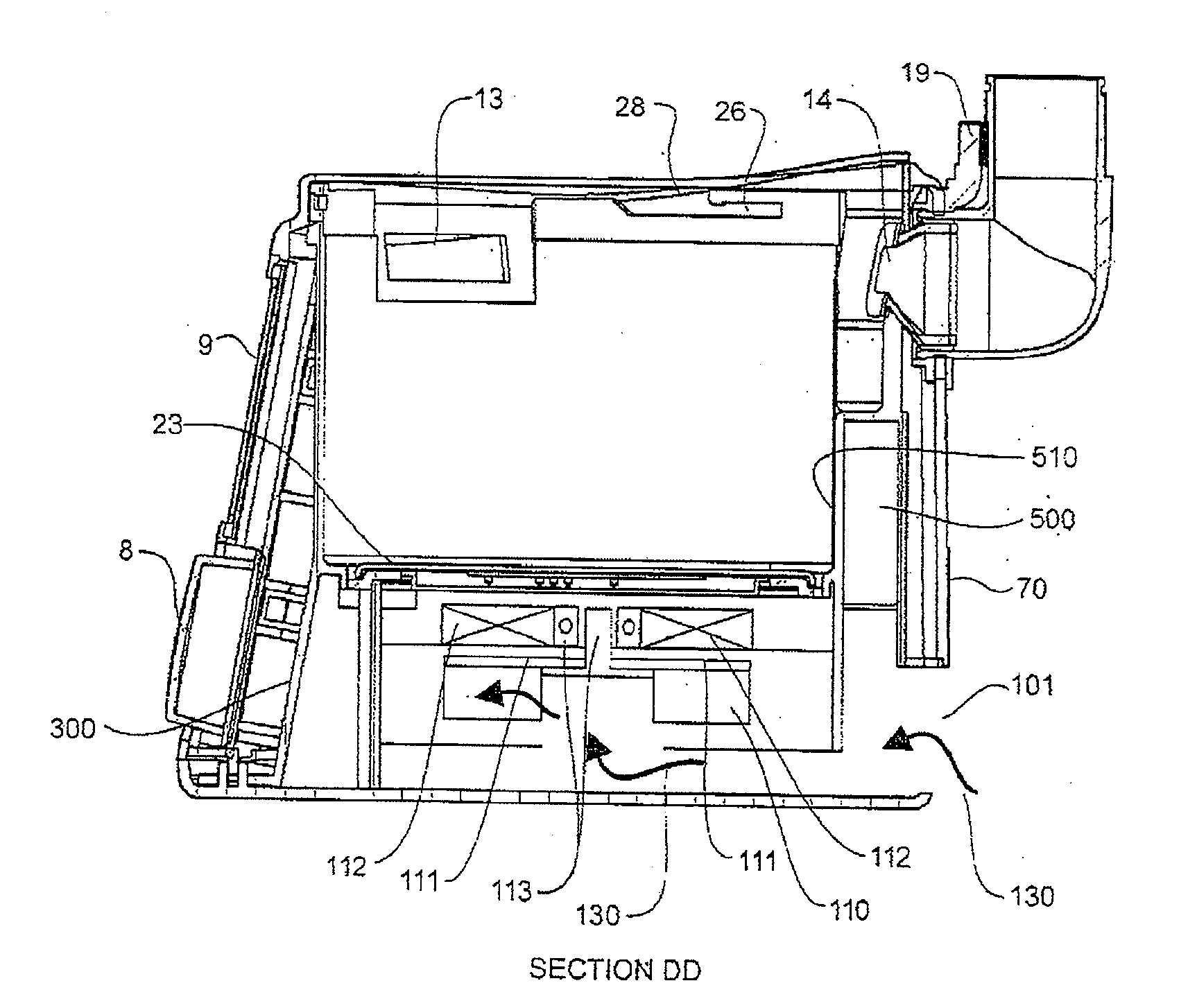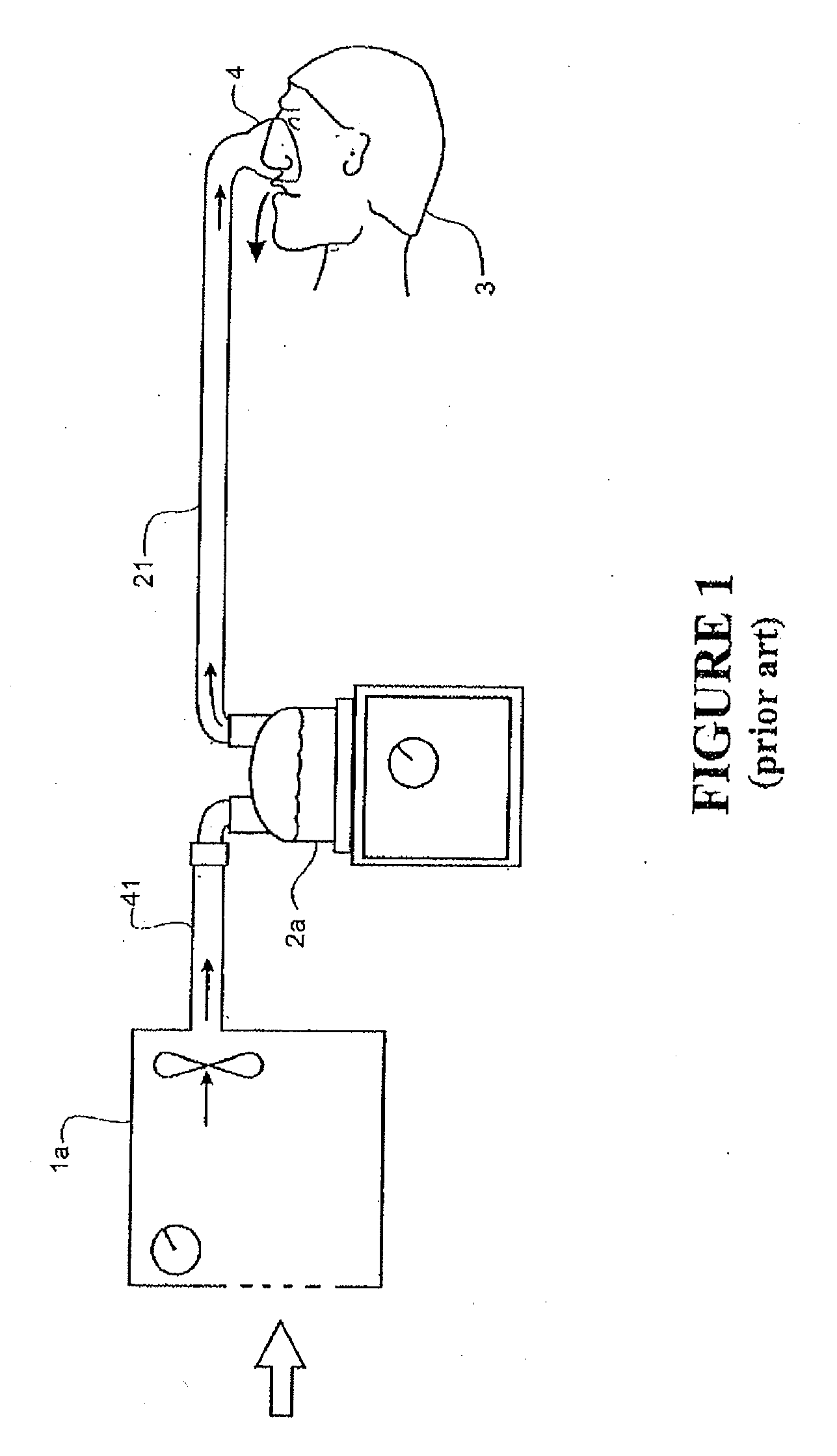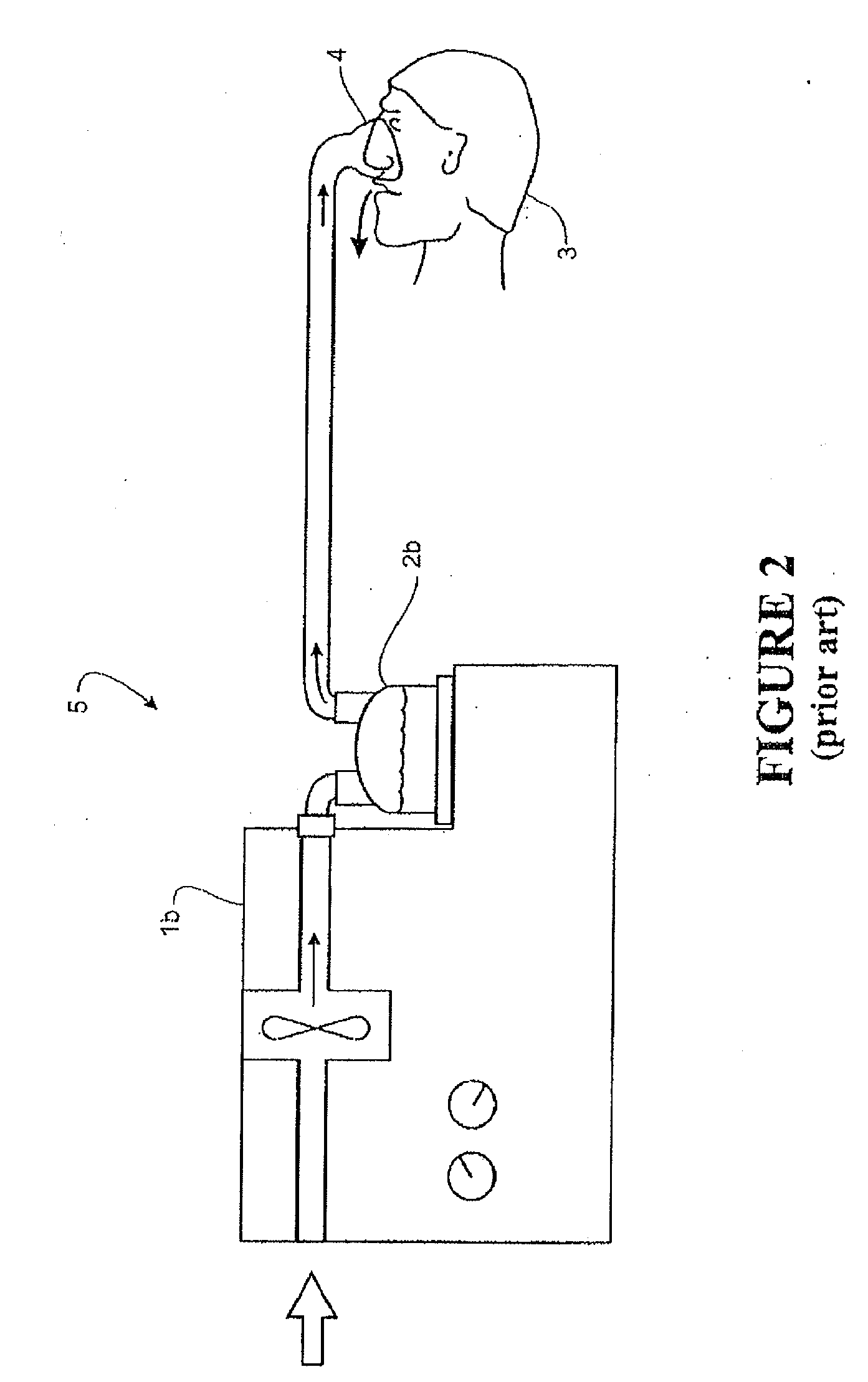Method and apparatus for increasing therapy compliance
a technology of compliance and therapy, applied in the direction of burners, respirators, combustion types, etc., can solve the problem of limited evidence that these technology-centric advances have any impact on complian
- Summary
- Abstract
- Description
- Claims
- Application Information
AI Technical Summary
Benefits of technology
Problems solved by technology
Method used
Image
Examples
Embodiment Construction
[0041]A schematic view of a user 3a receiving air from a known (prior art) modular assisted breathing unit and humidifier system is shown in FIG. 1. Pressurized air is provided from an assisted breathing unit or blower 1a via a conduit 41 to a humidifier chamber 2a. Humidified, • heated and pressurized gases exit the humidifier chamber 2a via a conduit 21, and are provided to the patient or user 3 via a user interface 4. The user interface 4 shown in FIG. 1 is a nasal mask, covering the nose of the user 3. However, it should be noted that in systems of these types, a full face mask, nasal cannula, tracheostomy fitting, or any other suitable user interface could be substituted for the nasal mask shown.
[0042]A schematic view of the user 3 receiving air from a known, prior art integrated blower / humidifier unit 5 is shown in FIG. 2. The system operates in the same manner as the modular system shown in FIG. 1, except that humidifier chamber 2b has been integrated with the blower unit 1b ...
PUM
 Login to View More
Login to View More Abstract
Description
Claims
Application Information
 Login to View More
Login to View More - R&D
- Intellectual Property
- Life Sciences
- Materials
- Tech Scout
- Unparalleled Data Quality
- Higher Quality Content
- 60% Fewer Hallucinations
Browse by: Latest US Patents, China's latest patents, Technical Efficacy Thesaurus, Application Domain, Technology Topic, Popular Technical Reports.
© 2025 PatSnap. All rights reserved.Legal|Privacy policy|Modern Slavery Act Transparency Statement|Sitemap|About US| Contact US: help@patsnap.com



